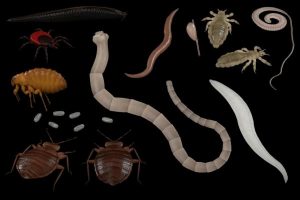Parasitic Strain

Parasites are single-cell to more complex organisms that use the human body as a host to feed and reproduce. They can exist internally and externally, anywhere. Each parasite has its specific life cycle that dictates its activities and location within the body. Since parasites only use hosts of a higher level, a double parasitic infection can occur when one parasite is hosted by a larger parasite. Although parasites can cause direct damage to organs and other structures, more likely the damaging impact to humans is from the toxins produced by the parasites themselves. The self defense mechanisms of he body, when healthy, keep parasitic infestations in check. If parasitic signatures are detected by the Bicom Optima 34, its therapeutic processes work effectively to assist the body to make the environment unsuitable for the parasite, causing them to leave the body and reducing the strain of constant immune response and energy loss.
- Amebae
- Babesia
- Tapeworms
- Flukes
- Fleas
- Helminthes
- Lice
- Leishmania
- Mites
- Parasites 1 (Blood)
- Parasites 2 (Intestines)
- Parasites 3 (Skin)
- Parasites 4 (Liver)
- Parasites 5 (Lungs)
- Parasites 6 (Muscles)
- Parasites 7 (Central Nervous System)
- Giardia
- Schistosoma
- Stable Fly/Horse
- Tainlidae
- Toxoplasma
- Trichomonads
- Worms 1 (Echinococcosis)
- Worms 2 (Bladder/Kidney)
- Worms 3 (Blood)
- Worms 4 (Intestine)
- Worms 5 (Tissue)
- Worms 6 (Skin)
- Worms 7 (Lungs)
- Worms 8 (Lymph)
- Worms 9 (Sensory Organs)
- Worms 10 (Central Nervous System)
- Ticks
- Anti Parasites
